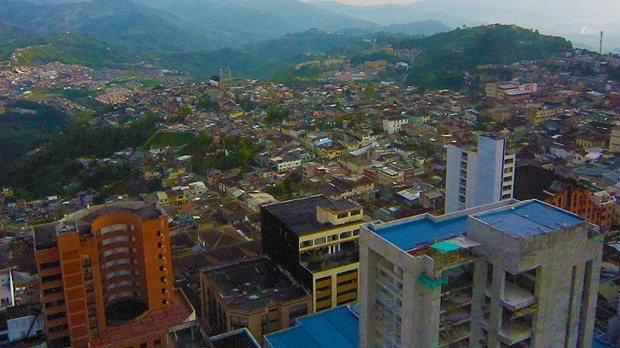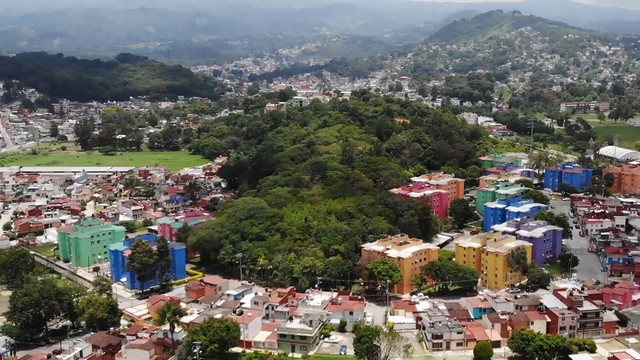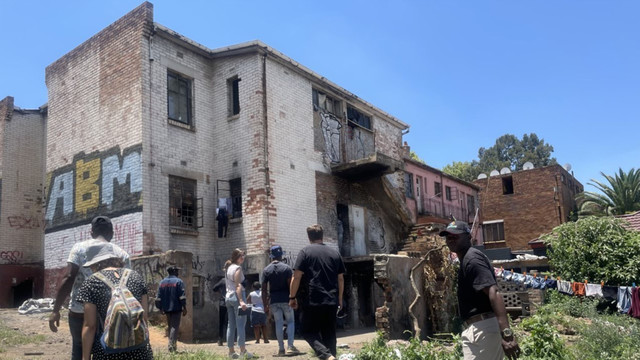Can we transform our cities?
Can cities prosper while meeting their responsibilities for acting on climate change? This is the focus of a new book by IPCC authors, co-edited by IIED's David Satterthwaite.


The case study for Manizales, in Colombia, in a new book edited by IIED's David Satterthwaite focuses on innovative community-oriented environmental policy and a commitment to disaster risk reduction (Photo: Melissa Delzio, Creative Commons via Flickr)
The importance of well-governed cities for prosperity and health is increasingly recognised, especially in a world where most cities are expanding rapidly. Now, city governments also have to address climate change.
Our new book, based on assessments in Bangalore, Bangkok, Dar es Salaam, Durban, London, Manizales, Mexico City, New York and Rosario, considers how this is possible. It asks how cities can not only meet the needs of their populations, but also integrate disaster risk reduction, climate change adaptation and low greenhouse gas emissions.
Cities on a finite planet was prepared by authors from the Intergovernmental Panel on Climate Change's Fifth Assessment that had a particular interest in urban areas. They include people who have worked on climate change issues in each of the nine cities as researchers, advisors and city government staff members. So the book is rooted in practical assessments of policy and practice in each city.
These assessments show the possibilities for 'transformative adaptation' that not only builds resilience within the city but contributes to much needed global system change to avoid dangerous climate change.
A global agenda at city level
Most of the discussions on implementing, financing and monitoring the new development agenda, described in the Sustainable Development Goals, focus on the role of national governments and international agencies. The nine city case studies, however, remind us of how much the achievement of these goals depends on local governments and local civil society.
The city studies also highlight the synergies between good development, disaster risk reduction and climate change adaptation. All three are about identifying and acting on local risks (to life, health, livelihoods and assets). All three need to be rooted in engagement with those who are most at risk.
Effective local governments who respond to the needs of their populations have set the ground work for providing the technical, institutional and financial foundations for climate change adaptation – as the case of Rosario in Argentina so clearly demonstrates. Here good development is the foundation for addressing climate change issues.
For Manizales in Colombia, the starting points for attention to climate change were an innovative community-oriented environmental policy and a commitment to disaster risk reduction. For Durban, South Africa, it was a climate change policy that then engaged with development issues. This is a city with a long history of innovation and the case study shows both the achievements and the constraints.
Climate change challenges
But even cities with a history of concerted effort continue to face serious challenges. The case study of New York City, shows both the long-standing innovation in response to climate change and the difficulties New York will face from climate change impacts.
The case on Mexico City highlights the work of a city government strongly committed to reducing greenhouse gas emissions but also points to the heightened risks that climate change is bringing or will bring to the city that still need to be addressed.
The study on London notes the need for the city to regain its status as a global leader in the integration of adaptation, mitigation and development.
Achieving transformation
What needs to change to encourage and support city governments to reach transformative adaptation? There needs to be strong local democracies that respond to the needs of those most at risk (and that have the capacity to do so).
A recognition of how much the achievement of most of the Sustainable Development Goals depend on local governments and local civil society – including the grassroots organisations formed by low income groups.
There also needs to be a recognition of how difficult it is to separate 'development' and 'climate change adaptation' and how much good development provides the foundation for adaptation. And a recognition that climate change adaptation and mitigation are not a constraint to economic success – indeed they are key to protecting it.
This raises the need for some fundamental changes in international funding agencies. Most global goals depend on the sum of successful local actions. So funding agencies need to build their capacity to support local innovation, local knowledge and local capacity to assess and to act.
We can envisage cities on our finite planet that are inclusive, safe, resilient and sustainable. We even have examples of cities that show what is possible.
But these are the outliers. Can we now envisage the political changes and changes in funding flows that makes the achievements of these outliers the norm?
David Satterthwaite (david.sattherthwaite@iied.org) is a senior fellow in the Human Settlements Group at IIED.
Cities on a Finite Planet. Towards transformative responses to climate change, edited by Sheridan Bartlett, David Satterthwaite (2016), available to purchase from Routledge, 274 pages, hardback (ISBN-10: 1138184098, ISBN-13: 978-1138184091)



